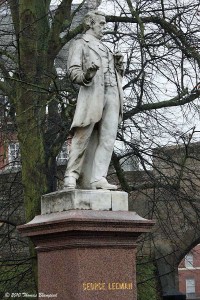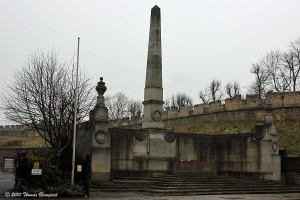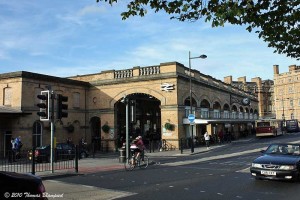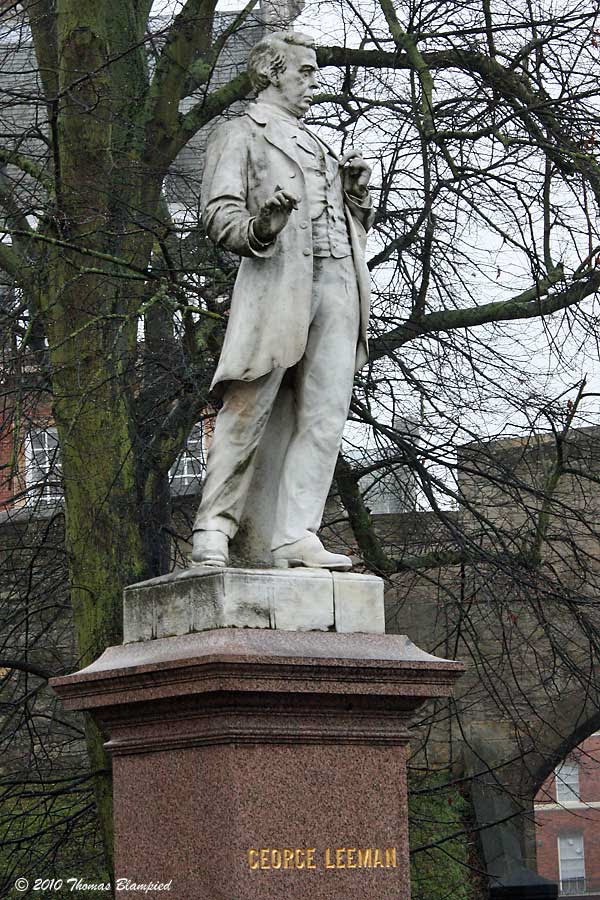Trip Report: In Search of York’s Railway History


 Click on each image for a closer look!
Click on each image for a closer look!
.
The city of York in the U.K. is synonymous with Britain’s railways. Roughly half-way between London and Edinburgh on the East Coast Main Line, York became an important crew change and refueling point. Today, the National Railway Museum and one of the busiest stations in the North-East mean that York is still an important railway city.
.
York joined the railway in 1839 and within a year, the city was connected to London by rail. George Hudson, one of Britain’s most famous (or infamous) railway executives came from the York area and made much of his fortune on projects to connect York to the railway. After some shady business practices were exposed, Hudson fell from grace and the principal railway man in York became George Leeman, who became head of the North Eastern Railway.
.
In 1877, the new York station opened to passengers. Its magnificent curved roof stretches for 800 feet and is 42 feet high. This structure truly is a temple to the supreme power of the railways in the Victorian period. Such an extravagant building was fitting as by the 1880s, the North Eastern Railway was the main employer in York. Today, the station has 11 platforms and at peak times, sees a departure every three minutes. The building is a Grade II-listed structure, meaning that it has been granted heritage protection. A combination of opposition from the City Council and the listed status recently prevented ticket barriers from being installed on the platforms.
.
York is also renowned for its carriage works, which opened in 1884. York remained an important centre of rolling stock manufacturing until 1995, when the Holgate Road ABB works closed. In the midst of privatisation, no more orders had been placed for the Class 465 EMUs, meaning that there was nothing for the York works to do. The ABB works were the last in the country capable of building an entire train in one facility. Various companies, including Thrall and Siemens, have occupied the works since, but the general trend is towards a complete loss of manual jobs related to the railway in York. The national infrastructure operator, Network Rail, currently uses the site as a maintenance base. In the early 1900s, there were up to 10,000 skilled railway workers in York, today the number is thought to be no more than a few hundred.
.
Despite the loss of these jobs, York remains an important railway administration centre. Near the station, many of the office buildings house train operating companies such as Grand Central and Northern Rail. Network Rail also has extensive office facilities, including in the aptly-named George Stephenson House.
.
Apart from the station and the National Railway museum, there are several locations of note in the city for the railway fan to see. Beside the station is the Grade II-listed Royal York Hotel, built in 1878. Near the station, there is a statue of George Leeman. Just inside the city walls is the enormous war memorial dedicated to workers of the North Eastern Railway killed during the two World Wars.
.
Despite the decline in manufacturing, York remains an important railway centre. Thanks to the National Railway Museum, the city is also a Mecca for railway enthusiasts and trainspotters can always be found on the station platforms.
.
The photos above show some of York’s railway history:
- The statue of George Leeman, near the railway station.
- The North Eastern Railway war memorial.
- The Royal York Hotel, a more modest structure than the Fairmont Royal York in Toronto.
The photos below are of the York railway station. From the street, York’s station is quite unimposing. However, once inside the magnificent roof is a sight to behold. The metal arches are a recognisable landmark, day or night.
.
York is easily reached by rail. Click here to find more information about the railway history of York.
.
Posting and pictures by Thomas Blampied
.




